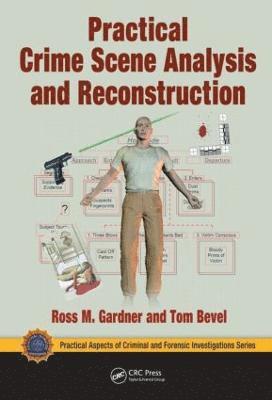
- Format
- Inbunden (Hardback)
- Språk
- Engelska
- Antal sidor
- 304
- Utgivningsdatum
- 2009-06-26
- Förlag
- CRC Press Inc
- Medarbetare
- Geberth, Vernon J. (series ed.)
- Illustratör/Fotograf
- 230 colour illustrations
- Illustrationer
- 230 Illustrations, color
- Dimensioner
- 254 x 178 x 18 mm
- Vikt
- Antal komponenter
- 1
- Komponenter
- 1368:Standard Color 7 x 10 in or 254 x 178 mm Case Laminate on White w/Gloss Lam
- ISBN
- 9781420065510
- 772 g
Practical Crime Scene Analysis and Reconstruction
- Specialorder (osäker tillgång). Skickas från oss inom 11-20 vardagar.
- Fri frakt över 249 kr för privatkunder i Sverige.
Passar bra ihop
De som köpt den här boken har ofta också köpt Before Crisis av Timothy Sellnow, Deanna Sellnow (häftad).
Köp båda 2 för 2249 krKundrecensioner
Fler böcker av författarna
-
Practical Crime Scene Processing and Investigation, Third Edition
Ross M Gardner, Donna Krouskup
-
Bloodstain Pattern Analysis with an Introduction to Crime Scene Reconstruction
Tom Bevel, Ross M Gardner
-
Crime Scene Investigation Procedural Guide
Michael S Maloney, Donald Housman, Ross M Gardner
Recensioner i media
From the Foreword: "Each author possesses a unique ability to distill complex issues into easily understood concepts. This book presents a clear and precise methodology serious practitioners cannot afford to abstain from studying the information provided here." Thomas W. Adair, President, Association for Crime Scene Reconstruction
Övrig information
Ross M. Gardner is an active instructor and consultant throughout the United States in crime scene analysis, bloodstain pattern analysis, and crime scene investigation; teaching to a variety of groups ranging from police and investigative organizations to trial counsel professional development groups. Tom Bevel is president of Bevel, Gardner and Associates, Inc., a forensic education and consulting company. He is also an associate professor in the Masters of Forensic Science program at the University of Central Oklahoma, Edmond.
Innehållsförteckning
An Introduction and History of Crime Scene Analysis. Theoretical and Practical Considerations for Implementing Crime Scene Analysis. Event Analysis: A Practical Methodology for Crime Scene Reconstruction. Resolving Significant Investigative Questions in CSR. Understanding Crime Scene Protocols and Their Effect on Reconstruction. Applying Bloodstain Pattern Analysis to Crime Scene Reconstruction. Shooting Scene Processing and Reconstruction. The Forensic Pathologist, the Body, and Crime Scene Reconstruction. Writing Crime Scene Reconstruction Reports. Arguments and Ethics. Developing and Using Demonstrative Exhibits in Support of the Crime Scene Analysis. Index.
Du kanske gillar
-
Hillbilly Elegy
J D Vance
Häftad -
Source Code
Bill Gates
Inbunden -
Pornography
Andrea Dworkin
Häftad


